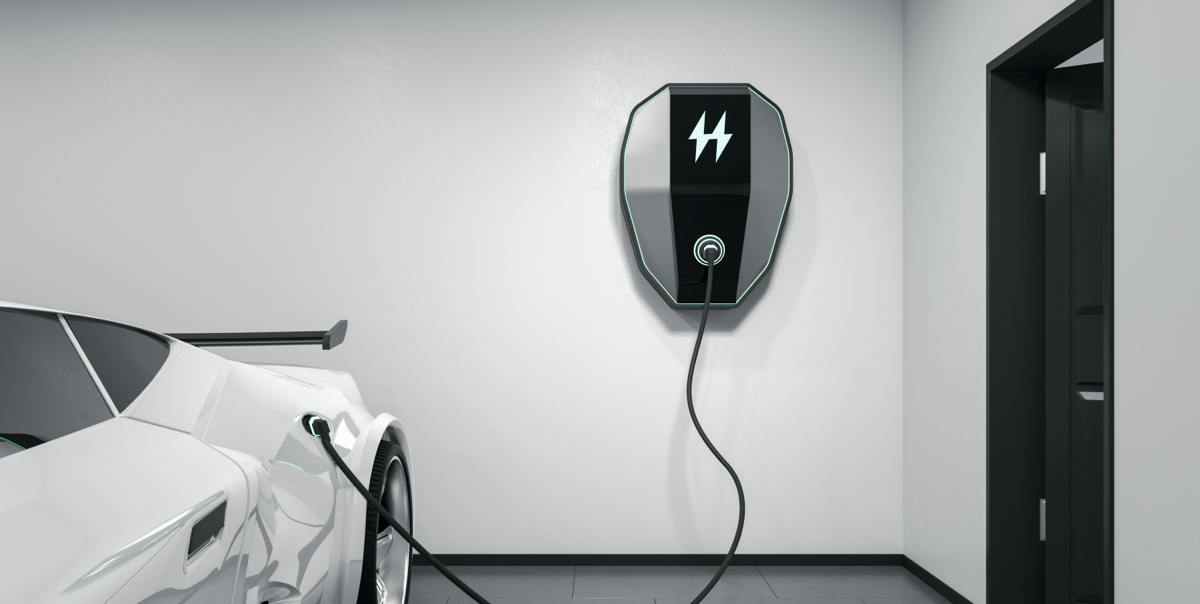How to Determine the Best Spot for EV Charging Stations Installation

4 Min. Read
One of the major selling points for home EV charger stations is convenience.
As a homeowner who has just purchased a new electric vehicle (EV), you will likely now be in the market for a level 2 charging station. Of course, you will want to maximize your convenience by placing your charger in an optimal location for EV charging.
With level 2 EV charging at home, electricians can customize the installation and place your equipment in the best place for you.
In this article, we will provide you with some tips on picking an optimal location for EV charging stations installation.
Indoors versus outdoors
While your charging station can be installed indoors or outdoors, an outdoor charger must be specially designed for protection from the elements like rain and lightning.
With an outdoor charger, for optimal positioning you will also need to ensure that the distance between the charger and your EV’s charging port is well within the length of your charging cable.
Indoor charging gives you the convenience to charge your EV while your car is parked on the garage.
In either installation, a permit is required by homeowners’ insurance carriers and local authorities. For a template of such a permit, click on this link.
Permitting is best handled by an experienced electrician. If you decide to file the permit by yourself, remember that you will be responsible for correcting any errors, and for all the costs of doing so. On the other hand, if an electrical contractor files the permit, he is responsible for correcting the work and all costs to do so.
In addition, you will need a dedicated 240-volt circuit that may draw from 32 to 80 amps. Depending on the amperage draw of the charger it may require modifications to your electric panel or installation of a new one.
Once again, you will need an experienced electrician for this complex and potentially dangerous work. A 240-volt current can cause a fire and injure or even kill you. You should not risk DIY.
Garage space constraints: will it fit?
You can normally find an optimum location to mount your EV charging station in the garage. The closer you can mount the charger to your electrical panel will help reduce the installation cost.
If there is just no space to install the EV Charger in the garage, as mentioned above, you can install an outdoor charger, as long as it’s within cable length restrictions.
Clearances around your vehicle
Unfortunately, automakers have not yet made optimal EV charging stations installation easy by adopting a standard for EV charging port location.
For example, Ford and Chevrolet have standardized to a front left EV location, but Mercedes and BMW place the charging port on the right rear of their EVs. Finally, Nissan and Audi place the port on the front end of the vehicle.
While each automaker has its own logical reasons for placement, the varying locations add complexity; you will need to consider your EV’s details to achieve the optimal location for your EV charger installations. The key here is to optimize both the charger and charging port locations so that the cable will not obstruct traffic around the EV.
Entry and egress
Start with the position of your EV in your garage or parking space. Then pick a place for your EV charger to provide easy entry to and egress from your EV. Next, determine that the charging cable easily reaches your EV charging port without excess tension.
You can estimate this length by measuring the distance from your charger station, then adding 10 feet.
Notably, cables for Level 2 chargers can be up to 25 feet long. Check with your charger manufacturer for specific lengths provided. In general, your cable should be at least 20 feet long.
- Loading and unloading: To avoid tripping over the charging cable while unloading from the rear of your EV, make sure that the cable runs on the side opposite which you will access the cargo area.
- Clearances: Make sure side clearances are adequate to ensure no interference with door swings or access to the charger.
On the left or the right?
This depends on where your charger port is located on your EV and where the EV is located in your garage. Situate the charger to best avoid having the cable impede foot traffic. Happily, as mentioned, charging cables range from 6-25 feet in length, enabling you to mount your charger on the left or right side of your EV. However, most U.S. vehicles are left-side drive, so the key is to locate the cable on the opposite side to avoid obstructions.
Distance from EV to charging station
Finally, to ensure the optimal EV charger location, consider where you usually park. Then, locate the charging station at the best distance from your EV possible within the length constraints of your cable and the location of the charging port on your EV.
To sum up, with a brand-new EV, you want to avoid the hassles of public charging by installing a home EV charging station for maximum convenience. To get that convenience, the optimal location for your EV charging stations installation is crucial.
However, the process is complex and must be done on a case-by-case basis. One size does not fit all.
All of this means that you will need an experienced, reliable partner to work with you from the beginning to design and implement the right installation for you.
Qmerit is that partner.
We simplify installations for EV drivers across the U.S. and Canada. With an unsurpassed network of certified electricians specializing in EV charging technologies, Qmerit will stand alongside you from start to finish of your project to achieve success in your EV charging stations installation.
Get started today by providing us with basic information about your home and a few photos. We will promptly respond with upfront pricing or a custom quote offer.
